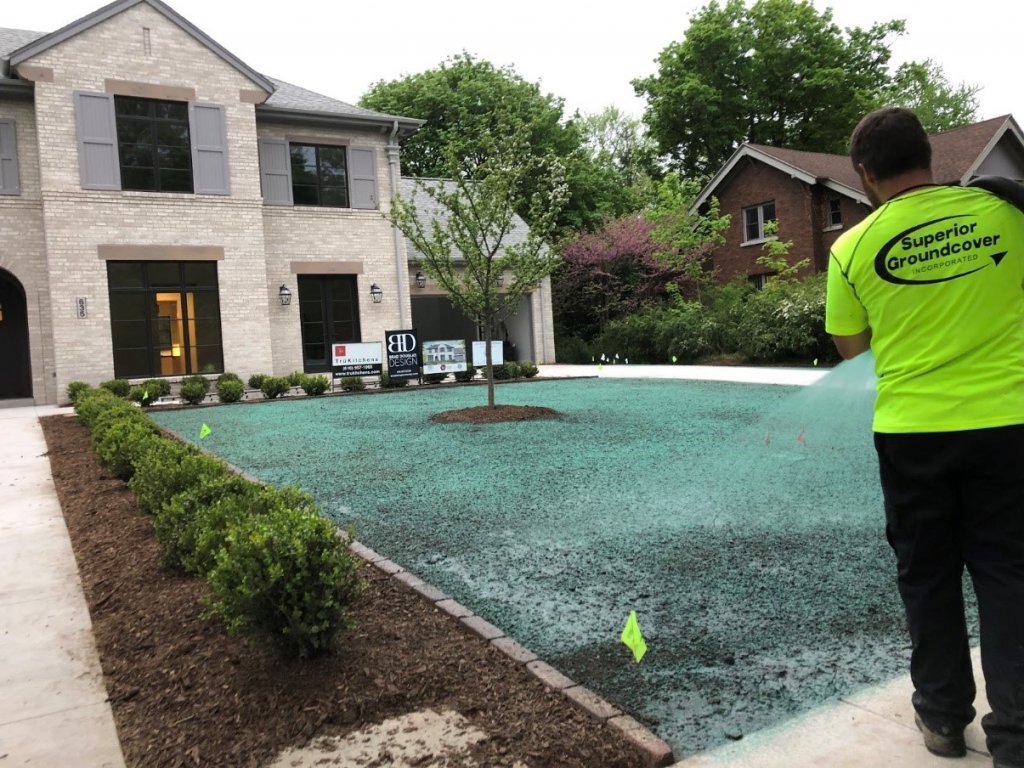Hydroseeding, or hydraulic mulch seeding, involves a mixture of water, mulch, fertilizer, and grass seed to plant grass over large areas, particularly effective in challenging terrains like slopes.
It’s often used in erosion control and as an alternative to traditional seed sowing.
While hydroseeding is recognized for its efficiency in landscape enhancement, it’s important to weigh its disadvantages alongside its benefits, especially for those considering this technique for their lawn.
In this article, we delve into the nuances of hydroseeding, including a balanced view of its pros and cons and how it compares with other lawn planting methods.
Our goal is to provide a clear understanding of hydroseeding, focusing on the disadvantages of hydroseeding, to help you make an informed decision for your landscaping needs.
Advantages of Hydroseeding
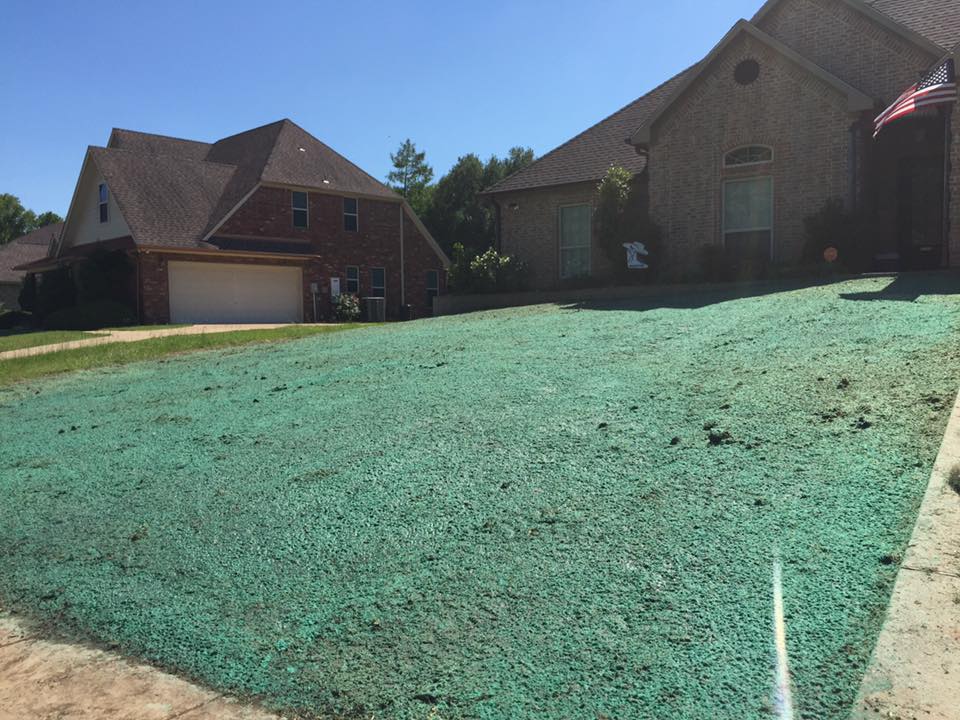
Before delving into the disadvantages of hydroseeding, it’s important to understand its advantages, especially for those considering it for large-scale lawns.
1. Effective for Large Areas
Hydroseeding is particularly effective for large lawns or challenging terrains like hills and slopes.
It provides a cost-efficient alternative to traditional methods, saving money on labor-intensive processes like sod installation.
2. Cost-Effective
The cost of hydroseeding falls between the lower expense of basic grass seed and the higher cost of sod.
While sod offers an instant lawn, hydroseeding is less expensive and allows the lawn to establish rapidly, albeit not instantly.
3. Healthy Lawn
Unlike sod, which limits you to a single grass species, hydroseeding enables the creation of a diverse grass blend.
This variety enhances the lawn’s aesthetic and reduces the risk of disease, a common issue in monoculture lawns.
Hydroseeded lawns also show quick germination, with visible growth in as little as a week.
4. Create Your Mixture of Seeds
With hydroseeding, you also select a mixture of grass species that will suit your needs and be perfect for your lawn.
This freedom of choice for plants makes your lawn look more beautiful.
You will have a unique attachment to your lawn as it will have exactly what species you want, with your favorite colors and texture, which is exactly what we want with our landscape.
Disadvantages of Hydroseeding
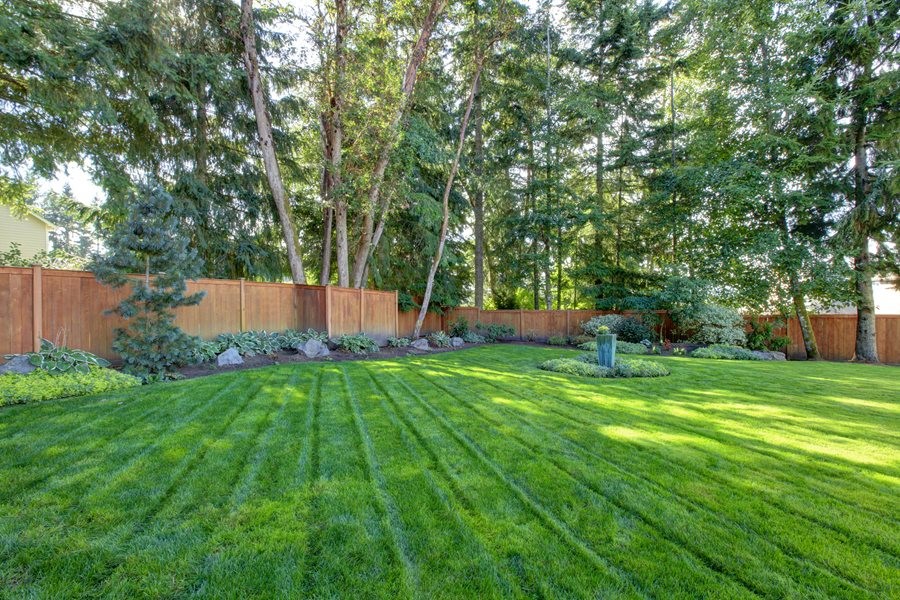
While hydroseeding has notable advantages, understanding its disadvantages is crucial for a balanced perspective, especially for those considering this method for their lawns.
1. Time-Consuming Establishment
One of the primary disadvantages of hydroseeding is the wait time for lawn establishment.
Unlike sod, which offers immediate results, hydro-seeded lawns require 3-4 weeks to grow enough for the first mowing.
This delay can be challenging for those who prefer quick results.
2. High Water Usage
Hydroseeding demands significant water usage, both during and after application.
This requirement for frequent watering, often twice or thrice daily, can be resource-intensive and may not be ideal in areas with water usage restrictions.
3. Not Suitable for DIY Projects
Another disadvantage of hydroseeding is its complexity. It’s a common misconception that hydroseeding can be a DIY project.
However, the process requires specialized machinery and expertise, typically necessitating the hiring of a professional service.
This not only increases the cost but also limits the accessibility for homeowners.
4. Precision and Timing
The process of hydroseeding requires precise application and timing.
Soil preparation must adhere to strict guidelines, and the timing of the seed application is crucial for optimal growth.
These requirements demand a high degree of precision and understanding of the growth patterns of different grass types, adding to the complexity of the process.
5. Environmental Considerations
This applies when you are using this technique for a larger landscape.
Large areas demand more water and fertilizers, which in turn can affect the environment in a negative way.
Using fertilizers on large fields increases the risk of run-off of these chemicals into natural vegetation or soil, which can destroy the quality of the vegetation.
The Hydroseeding Method
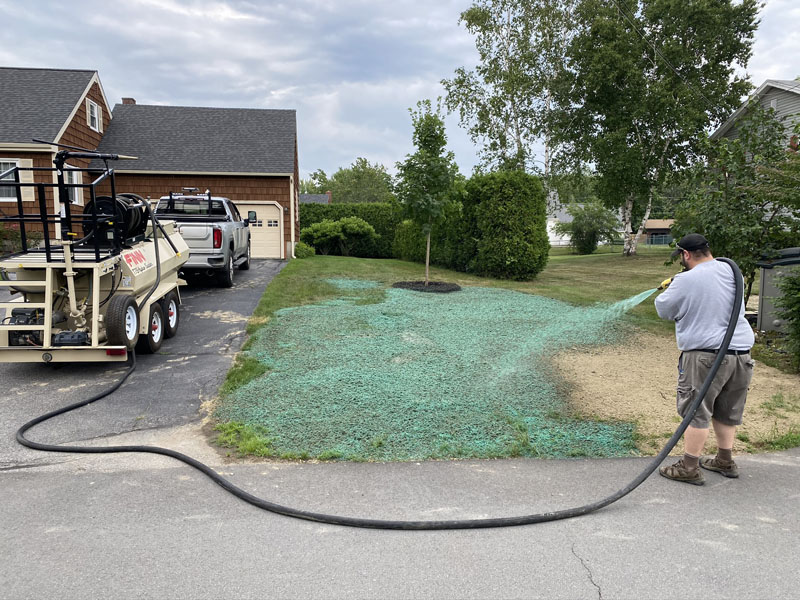
Hydroseeding involves spraying a carefully prepared slurry.
This slurry typically contains a mix of grass seed, water, mulch, and fertilizer, often enriched with polymers for water retention, lime, and biostimulants.
A green dye may sometimes be added to the mixture to aid in even application.
The preparation and application of this slurry require precision.
It’s continuously mixed in a tank, usually mounted on a trailer or truck, to maintain an even distribution of ingredients.
Before the application, thorough soil preparation is crucial to ensure the seeds have the best environment for germination and growth.
Once ready, the slurry is sprayed over the prepared area using a specialized nozzle.
This method is versatile and can even be adapted for aerial application in large or inaccessible areas, such as reseeding wilderness after wildfires.
Best or Optimal Time for Hydroseeding
When it comes to hydroseeding, timing is key.
The initial growth period requires temperatures between 75-80 degrees, making late spring or early fall ideal for most climates.
These seasons typically demand less water than the hot summer months, although summer’s warmth accelerates grass growth.
It’s advisable to avoid hydroseeding in winter, as the seeds can enter a dormant state due to the cold, delaying germination until warmer weather returns.
This aspect is particularly important when considering the disadvantages of hydroseeding, as timing impacts both the success of the process and resource usage.
Precautions to Take after Hydroseeding
After the hydroseeding process, proper maintenance is vital.
This is particularly important when considering the disadvantages of hydroseeding, as post-application care can be intensive.
Initially, the newly seeded area must be kept moist, requiring frequent watering – often three to four times daily for at least 15 minutes each session.
This routine should continue for the first two weeks, after which you can reduce the frequency but increase the watering duration.
Given the high water demand, this phase can be resource-intensive and challenging, especially for first-timers.
It is often advisable to seek professional assistance to ensure optimal lawn establishment.
Erosion Control with Hydroseeding
A key application of hydroseeding is in erosion control.
The technique effectively holds moisture and binds the soil, preventing loss due to environmental factors like wind and rain.
This is achieved through the mulch and seed combination in the slurry, which creates a protective layer over the soil.
The result is a dense, uniform lawn that provides an excellent environment for growth.
Decide for Yourself- Is Hydroseeding the Right Choice for You?
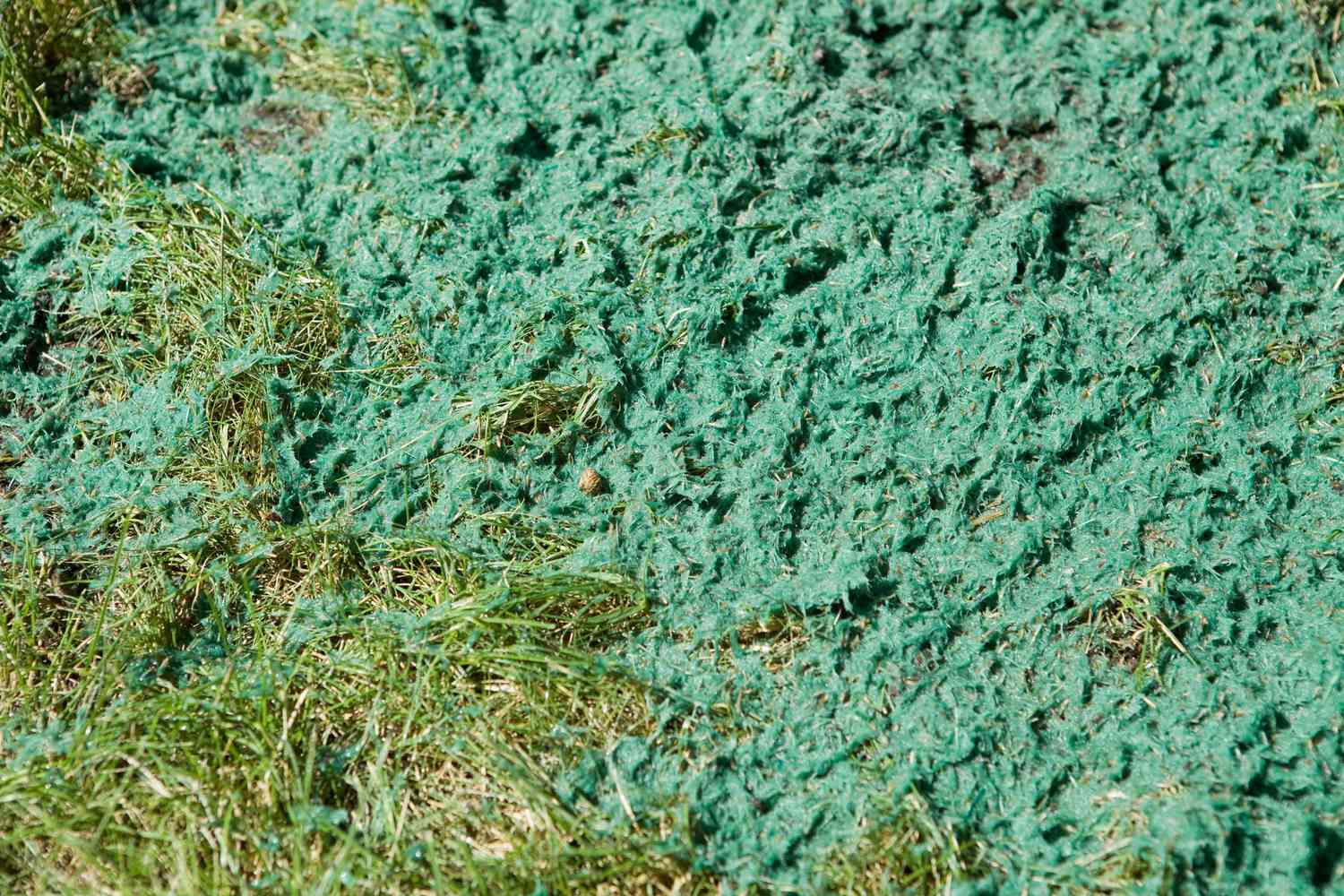
By now, you know all the pros and cons of the hydroseeding technique.
You can decide for yourself what meets the needs and demands of your lawn and choose the one that works for you.
To achieve the same goal that is having a lush green lawn, there are several ofays you can use to do it.
Laying sod can help you get an instant lawn, and you can do it as a DIY project.
But, if you have time and are low on budget, hydroseeding or germinating seeds on yourself is probably the best way to do it.
Also, though it takes longer, it gives your lawn a good start.
Moreover, it provides the benefit of choosing a blend of flowers or seeds to grow in your lawn, something that is not offered by sods.
Regardless of which method you choose, there are a few things that you should keep in mind to get a lush green beautiful lawn.
Firstly, avoid over-seeding, especially if the soil condition is not very good. It may deteriorate your lawn, or you may get thick patches of grass.
Secondly, fertilize the soil only as much as required. Too many fertilizers can mess up the pH of the soil and can imbalance it.
It may increase the alkalinity of the soil, making it difficult for micronutrients like nitrogen and phosphorus, which are crucial elements for the health of plants, to dissolve in the soil properly.
And lastly, take all necessary measures to keep your plants healthy and green.
Conclusion
While hydroseeding offers a range of benefits, particularly for large areas and erosion control, it’s important to consider its disadvantages.
The need for extensive watering, the requirement for professional application, and the patience required for lawn establishment.
These factors can impact the cost and feasibility of choosing hydroseeding for your lawn.
With this comprehensive overview of hydroseeding, you should now understand whether this method aligns with your landscaping needs and goals.
We hope this article has been informative in your decision-making process.
Should you choose hydroseeding, or if you have any further questions, feel free to reach out and share your experiences.

